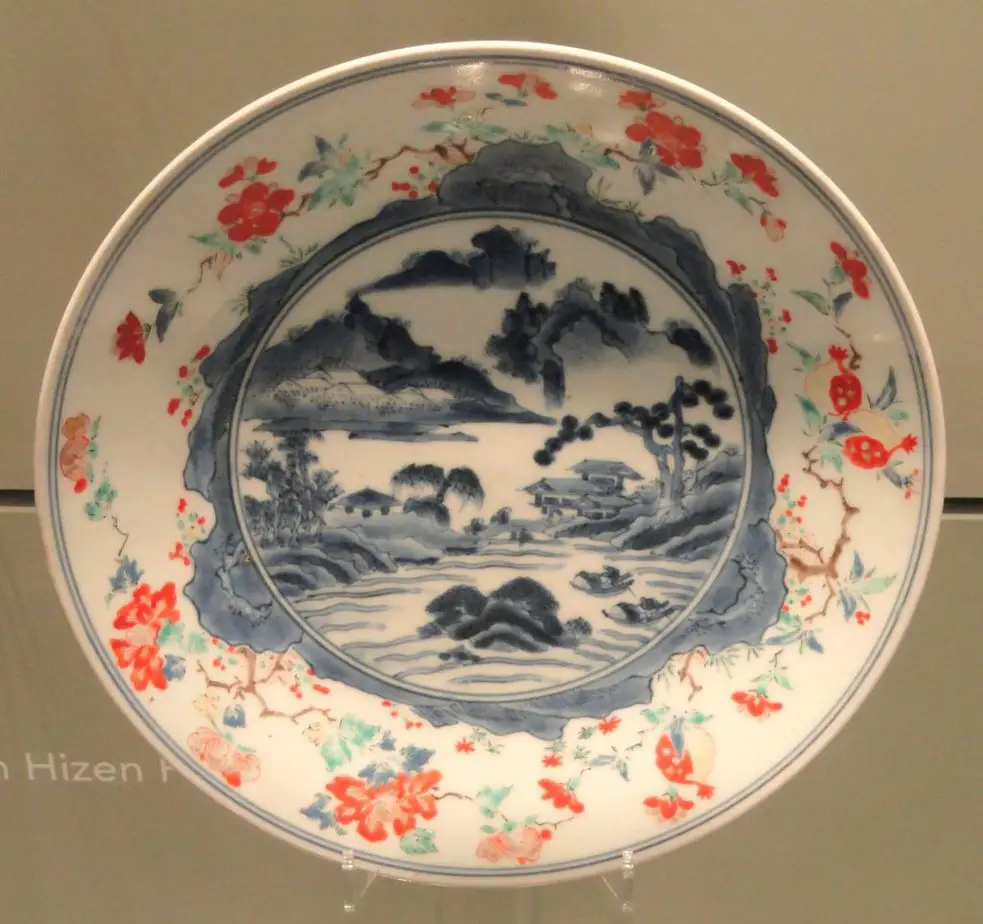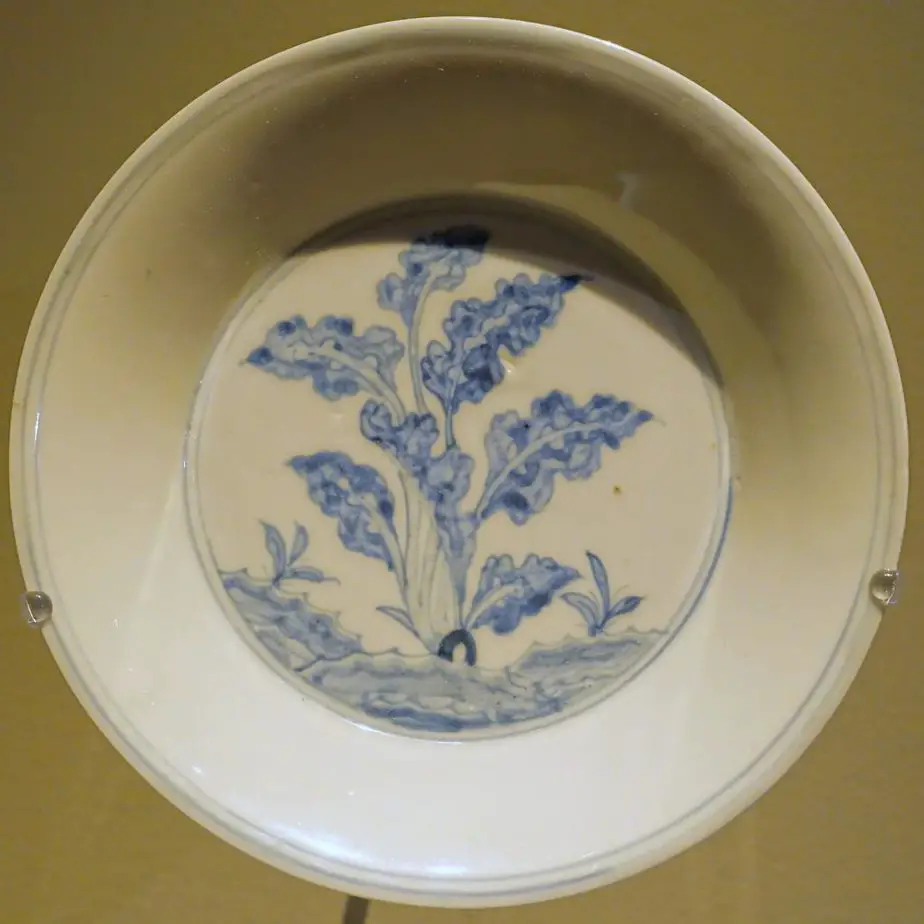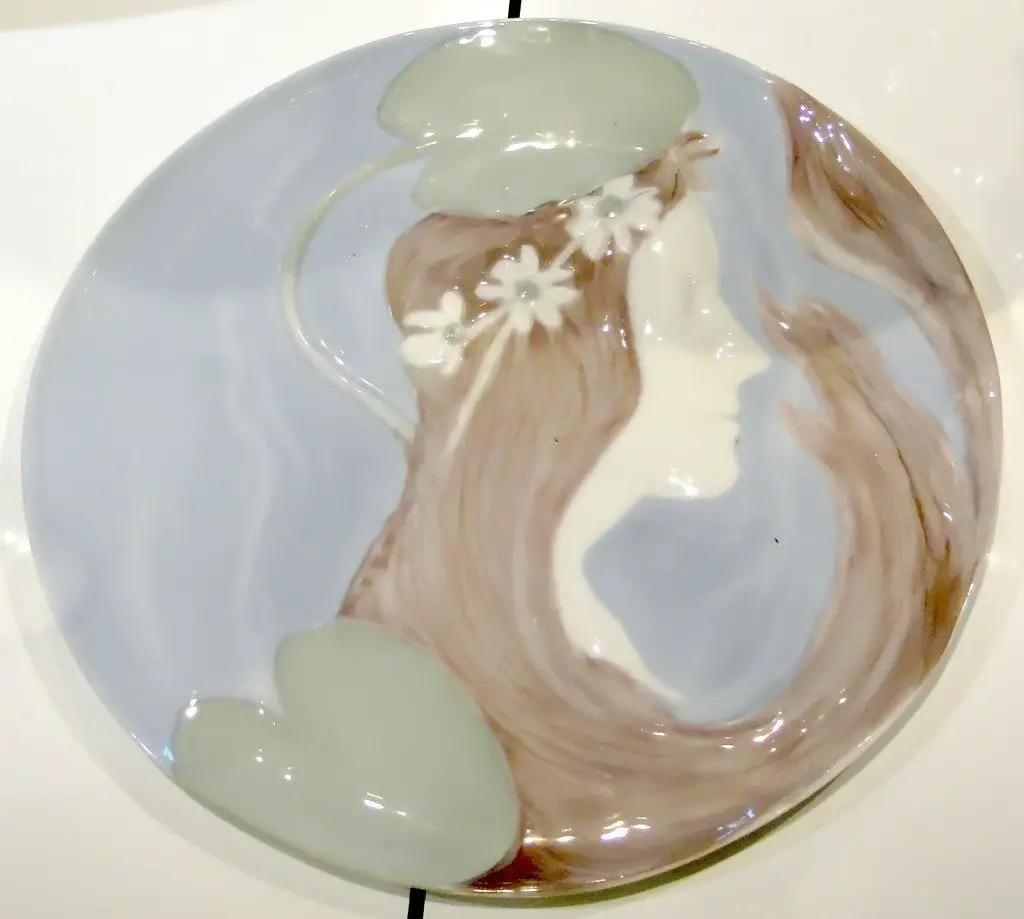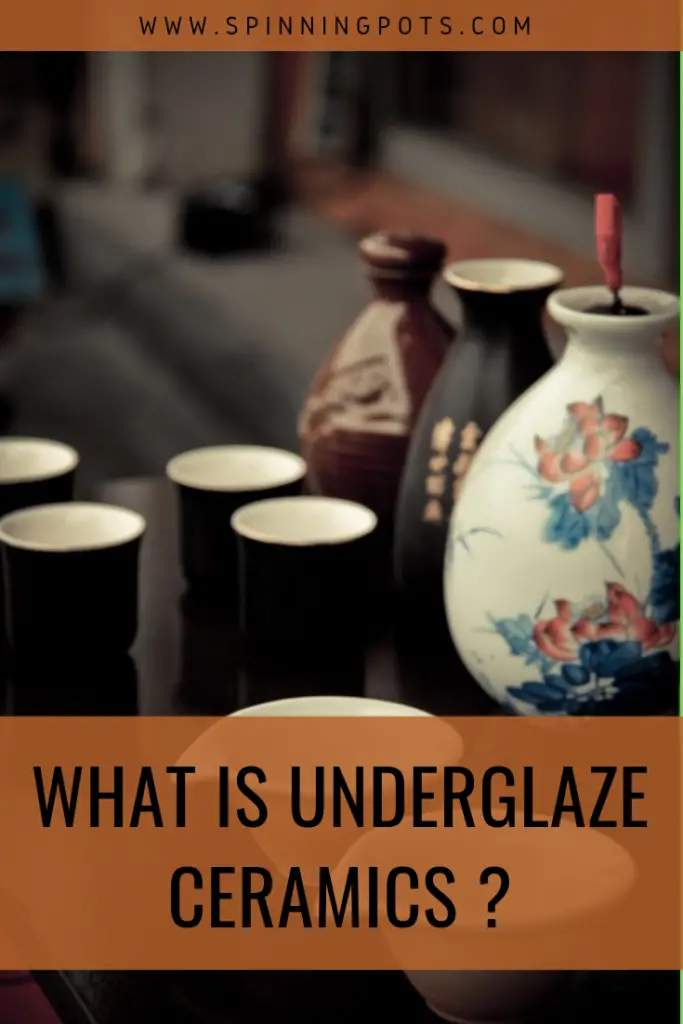One aspect of ceramics that a few know about is underglaze ceramics. However, it is something that can really take your pottery to a new level.
What is underglaze ceramics though, and how do you do it? In this, we’ll dive into what it is, and how it can ultimately benefit you as a potter.
By the end of this post, you’ll have a new technique under your belt, and one that will help you as a potter really hone your skills.

Underglaze by definition is a method to decorate pottery in which you apply the decoration on the surface before you put a glaze on this.
What is Underglaze?
Essentially, the process of this is the following:
- You put the glaze on beforehand
- You fire it
- You then create a durable and uniform sheen to this
The underglaze uses pigments that come from oxides, and when these fuses together they fire in the kiln.
With underglaze, it allows you to do the following with it:
- Fire at a single fire
- Can be a bit cheaper
- You might need to use just one universal temperature
However, the colors that you use with this is much more limited, but it definitely has a lot of great uses. Lots of people like underglaze because of how simple it can be, and how you can use it.
Underglaze in History

Underglaze was actually used a lot in historical pottery, all the way back to ancient China. That’s because it allows you to fire once, making it a bit easier for potters to do this.
Some of the examples of early underglaze firing include the following:
- The use of this in porcelain during historical times, since you needed a higher firing temperature for the body
- The pottery in ancient porcelain would underglaze blue, and then use some browns and reds, and often they’d turn black during high firing
- Cobalt blue was made famous during the Ming dynasty, which is how the blue and white porcelain would come about
- China painting, tin-glazed pottery, blue and white pottery, majolica, and even Egyptian faience were actually different forms of underglaze
- Underglaze figures have been around since the Tang and the Five Dynasties periods, and it’s said to have been originally seen in Tonguan, Changsha
So yes, there is a lot of history to underglaze pottery, and there is a lot that you can do with it. Lots of old Chinese pottery comes from this, and vintage pottery that’s blue and white, especially porcelain, uses a lot of these colors, and they are certainly worth it, and very useful to those looking to really take their pottery to new heights.
All About Commercial Underglaze
Commercial underglazes are actually what a lot of people use today, and that’s because it’s all right there. The main components of commercial underglaze include the following:
- Raw pigment
- Clay
- Water
Commercial versions are essentially the slips that you use today.
Most of these underglazes are applied in the following manner:
- They are applied either when wet
- Can be applied leather hard
- Done before you bisque
However, in this day and age, most of these are similar to englobes these days, and they actually have some other benefits and features, include the following:
- They use fritted material
- This, in turn, will reduce the shrinkage
- These are applied to both greenware and bisque pottery in many times
- They involve other different application methods
Lots of underglazes come in different forms that can benefit application too, and some of these also include the following:
- Crayons
- Chalk
- Pencils
- Semi-moist pads to use as watercolors
So thankfully, you don’t need to apply it like how others have in the past, and you’ll be amazed at the different features that you can focus on and some of the different application methods that you have today.
The Benefits of Underglaze
Underglazes have a lot of benefits to pottery, and there is so much you can do with them. Below, you’ll find out all of the benefits of underglaze:
- They can be used before you bisque
- You can add more color in an area that didn’t get enough before the final firing
- You can do both a colored and a clear glaze on this with underglaze
- You can actually put the clear glaze right over the top, and you won’t have to worry about design flaws
- You can create new colors with this during each fire
- You sometimes can fire once, especially if you don’t want to have a clear glaze
- They typically help to hold the colors better
- They crack a lot less
However, as of note usually, you’ve got to fire these at extremely high temperatures, which is something that you’ll want to make sure you understand. If you’re not already firing these super hot, you might not be able to use this, and it doesn’t work as well on earthenware pottery as you might think
Originally, these underglazes used to be dry for the most part and that was because they were applied with a clear glaze, and they were applied to wet clay, and that’s because the “clay based” colors would shrink with the piece that they sat on, but nowadays, they come in different forms, as we mentioned before.
How Do You Underglaze?

So what is the best way to underglaze? Well, there are a few ways that you do this, and they are the following:
- First, you need to take your piece and make it out of clay and get the design fully shaped before anything else
- Begin with the shades of color that you want to use. You can use different shades of every single color in order to achieve this
- You can then create tiny bands, all of which will cause the colors to separate
- At this point, you can then fill in these little areas with other colors
- Start to mostly put these together and keep the first layer colors from similar families so that they blend in together
- You can from here work on the design, let it dry, and apply more as needed
- If you want to do a design on the underside of the bowl, do this as well, marking each side and then putting the design on there
- Once you have a general idea put there, you can then start to add the slightly darker underglaze colors
- From there, take your darkest underglaze colors and add it to here, such as less if you’re underglazing a flower design on a bowl
- You can then outline these with a slightly darker underglaze too in order to create a beautiful shape to it
- At this point, you’ll then be able to do the same with the underside, and then you’re done
This is good if you’re trying to really get an intricate design on your pieces. For some people, they could spend hours just trying to create a deep and very intricate design, but if it’s your first time experimenting with underglazes, you can start off simple.
You can apply these different underglazes in each way, and some of the best ways to apply them include the following:
- Brushing them on
- Pouring
- Dipping
- Spraying
As a rule of thumb, anything goes with these, and you just need to look at the different requirements.
If you notice that your underglaze is a little bit thick, you can actually use water to help ease it a little bit. Remember, you can do pretty much anything with this, and you’ll be happy to do this over and over again too.
Using Sgraffito
This is a type of underglaze application that’s actually new and super popular. This opens up new and different ways to really apply underglaze
How you do it is is the following:
- First, you layer this
- First, you mix the slip and the stoneware glazes together
- You then fire this more and more
- You can experiment with the surface, materials, and the techniques to do this
If you’ve ever been curious to see how far the limits of this can go, then you should definitely consider experimenting with this process. There is a lot that you can do with this, and a lot that you can truly master over time.
Slips and Stains
So you’ve heard that slips and stains are a type of underglaze. Well, they are, and here, we’ll dive into just what each of those is, and the use of them.
For slips, they’ve actually been used for a lot of different pieces of pottery. How you use them include the following:
- Painting
- Brushing them on
- Bas-relief embellishments
- Pasting them on
Slips have been used since the early days of humans, and basically, they’re clay particles that are suspended within water. They’ve been used to add colors to pottery since early times, and it’s the most naturally occurring.
Personally, I love using slips to add more depth to the different pieces of pottery that are out there, and they are definitely good for adding more to the table.
As for stains, they’re a little bit different and encompass the following:
- They’re raw ceramic pigments that are suspended in water
- Nowadays, they are prepared and blended so they are reliable and consistent
- They tend to be more toxic than those that are used for slips and the like
With this one, you can paint these on just like with slips, but they do contain raw oxides and carbonates a good chunk of the time. So, always use disposable gloves and a respirator, and always make sure you’re safe when you use them.
Speaking of which, in the next section, we’ll discuss underglaze safety, and why that matters.
Underglaze Safety
Just like with pretty much anything in pottery, there are a few things that you should always make sure that you understand, and ways to stay safe when handling underglazes.
Some safety considerations you should have a potter include the following:
- Never ingest raw underglaze
- If the glaze isn’t food-safe, don’t use that for food
- Keep foods and drinks away from this
- Never hold a brush with underglaze on it to your mouth
- Don’t chew on your fingernails in the studio
- When working with underglaze, always make sure that you have on latex or rubber gloves
- For some, due to the particles, make sure that you wear a dust mask or a respirator
- When you’re finished, wash your hands
- If you’re working with these for a long period of time, always take the safety precautions
- If you’re working with a dry underglaze, do make sure you don’t wear contacts if there is dust
- Always wear a smock or apron when working with underglaze so that you don’t spread toxic materials and irritants
When working with underglaze, you should always keep these safety precautions in mind. While it is a great way to decorate your pottery, that doesn’t mean it doesn’t come with risks, so always know the risks of this as well before you begin with this journey.
Try Underglazing Today!
Underglazing is a fun and really unique way to make your pottery shine, and in a sense, it’s almost like painting pottery. Lots of professionals love to use underglaze in their ceramics because you can add a lot of amazing features to this.
It’s a technique that’s been sued since ancient times, and even prehistoric humans liked to use this. If you’ve been curious about learning underglaze, then try it out today.
There are a lot of different options for those looking to try this amazing technique, and who knows, maybe you’ll create an amazing design for your pottery from this








